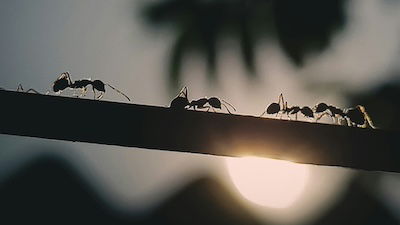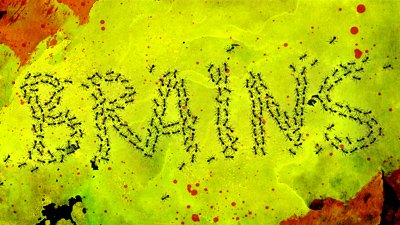
Water Striders: Hallmark of Evolution or Testimony to Creation?
ScienceNOW: “Water Striders Put Best Foot Forward” The incredible water strider: is its “just so” construction a hallmark of evolution or a testimony to creation?
Oft-forgotten though it may be, the humble water strider doubtlessly belongs on a list of the most incredible animals due to its almost magical ability to walk on water. What makes the insect’s strides even more unbelievable is that they are conducted using long, thin feet—exactly the opposite of the boat-like underside you might expect for a water-walking creature.
Marveling at the creatures, physicist Dominic Vella of Paris’s famous École Normale Supérieure wondered exactly what determines the length of water striders’ legs. Scientists have long known that water striders rely on the surface tension of water to keep them afloat. Surface tension, caused by water molecules attracting each other, effectively tightening the surface and allowing light, widely spread objects to stay afloat.
Scientists have long known that water striders rely on the surface tension of water to keep them afloat.
The key to the water strider’s gravity-defying leg, Vella discovered, is its ability to bend like spring steel. Thus, unlike a rigid leg, the water strider’s leg bends in direct response to the force of surface tension; the longer the leg, the more it can support. ScienceNOW’s Rachel Zelkowitz continues the explanation:
Vella developed an equation to determine how much surface tension supports a bent leg of any given length could achieve. At very short lengths, the leg is essentially rigid, so adding more length increases the amount of weight it can support. But at a certain point—which depends on the radius of the leg’s curvature and its elasticity—adding more length makes the object bend significantly. That adds drag but doesn’t increase the weight the thing can support.
That’s all intriguing, but now comes the most interesting part. Vella measured the legs of some water striders and determined that they were just shorter than this critical length—long enough to maximize the amount of weight they can support, but not so long that they add extra drag.
No one seems to believe such perfection is coincidental, of course; but who or what should water striders thank for “such luck”? Vella has an opinion: “Evolution’s testing that [leg-length] limit out.”
In this case, it’s not so ridiculous an idea that, if the genetic information were there to begin with, natural selection would favor those water striders who didn’t sink! The question is, how many generations of water striders would have to drown—presumably before reproducing—before developing the “just right” combination of leg rigidity, leg length, body weight, and so forth? Natural selection could not have favored intermediate forms that all drowned on the way to the only water strider that didn’t drown!
Creationists offer explanations that range from at least as plausible to much more plausible than natural selection acting on information-reshuffling and information-reducing mutations. In this case, the creationist explanation is the only believable one; the perfect design is a blaring signal that points to the ingenuity of the Creator. No wonder engineers at Carnegie Mellon are building robots that emulate the incredible water strider!
For more information:
Remember, if you see a news story that might merit some attention, let us know about it! (Note: if the story originates from the Associated Press, Fox News, MSNBC, the New York Times, or another major national media outlet, we will most likely have already heard about it.) And thanks to all of our readers who have submitted great news tips to us.
(Please note that links will take you directly to the source. Answers in Genesis is not responsible for content on the websites to which we refer. For more information, please see our Privacy Policy.)
Recommended Resources

Answers in Genesis is an apologetics ministry, dedicated to helping Christians defend their faith and proclaim the good news of Jesus Christ.
- Customer Service 800.778.3390
- Available Monday–Friday | 9 AM–5 PM ET
- © 2025 Answers in Genesis




